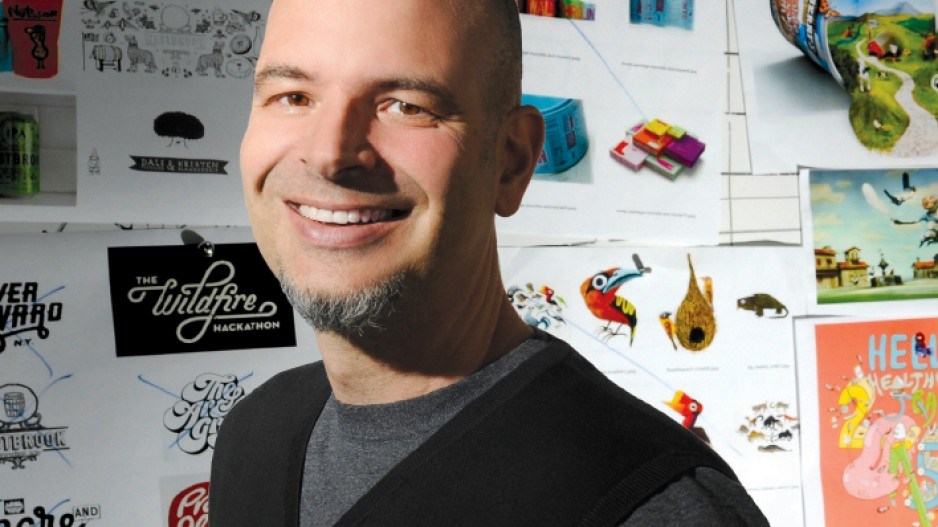Talking to 18 to 25-year-olds isn’t always easy, especially when what you’re talking about is school. Yet that’s exactly what John Casablancas Institute Vancouver needed to do if it wanted to grow its business: grab the attention of this notoriously hard-to-reach demographic, then persuade them to consider a career in fashion, makeup and cosmetology.
Spring Advertising was up for the challenge. As Spring’s partner and creative director Rob Schlyecher explained, since taking on the institute as a client six years ago, the agency has relied on a mixture of both traditional media and new media to create an innovative, award-winning campaign that has produced impressive business results.
“The hinge of the campaign is a slogan called ‘Born to do this,’” Schlyecher said. The slogan came from an insight into the client’s target audience: young women who aren’t exceptional at academics, but share an intense passion for aesthetics and fashion.
“Many of them have always been unaware that that was a piece of them that could lead to a career,” Schlyecher said. “So ‘Born to do this’ was turned into kind of a destiny call.”
Traditional media has always been the foundation of the campaign, in the form of an ongoing series of lighthearted 30-second radio spots. “We used traditional media very carefully so we could place parent and child in the car when the child was going to secondary school, or even a job right out of secondary school in the morning and getting a ride,” Schlyecher said.
As Schlyecher explained, the spots were strategically written with laughs in mind.
“These two people [are] sitting in the car, at eight in the morning, and Mom is wondering what this kid’s going to do with her life. And the kid’s wondering how she’s going to tell her mom what her report card looks like. And they both have a laugh at an ad for hair, makeup and fashion school. They reach common ground around that particular purchase decision.”
The campaign’s traditional media drove traffic to the new media component: a purpose-build website, the tone of which was 180 degrees from that of the radio campaign.
“[We] immediately switched gears from comedy into professional-grade post-secondary education in the industry,” Schlyecher said. “The interface on the website looks like you’ve arrived in the school.”
The campaign also includes a number of guerilla executions, including a 30-foot-long billboard intended to mimic the front door of a refrigerator covered in a colourful mural of a fashion model created from alphabet magnets.
On the social side, Spring built a Facebook app entitled “Freak your face,” offering users the ability to apply horror-movie makeup to their Facebook profile. As Schlyecher pointed out, the execution has pass-along value that would be impossible to replicate with traditional media.
Even six years in, the campaign for the John Casablancas Institute still holds considerable appeal to Jim Falconer, its president.
“The whole Born to do This campaign has been great,” he said. “It’s such a perfect fit.”
Falconer knows the message is getting through – mostly because his clients tell him so.
“They write essays when they [apply to] the program. I would say at least 50% of them quote they were ‘born to do this’ in the essay at some point.”
To Falconer, the success of the campaign comes down to the strategic mix between traditional and new media.
“[We] need the combination,” Falconer said. “Our clientele … is living on the Internet, on Facebook and other things, but they still have to find out about us through other methods. We have to give them a reason to go online to find us.”
And the bottom line? Since the campaign began, John Casablancas Institute has grown steadily, despite an intensely challenging business environment.
“It’s very competitive. There are options for these kids,” Falconer noted. Every year, however, there seem to be more clients – a fact Falconer attributes largely to Spring’s campaign. “It’s definitely successful.”
Looking back, Schlyecher believes the John Casablancas campaign is indicative of a shift to merge traditional and non-traditional media. “Clients are pushing the change,” he said. “The separation of new and traditional service in an ad agency is on its way out forever.”
And to Schlyecher, that is exactly as it should be. “You can’t click on a newspaper to see the video or explore the site or play the game. That said, you can’t replace a radio spot with a YouTube video while your customer is driving the kids to school – I hope!”




